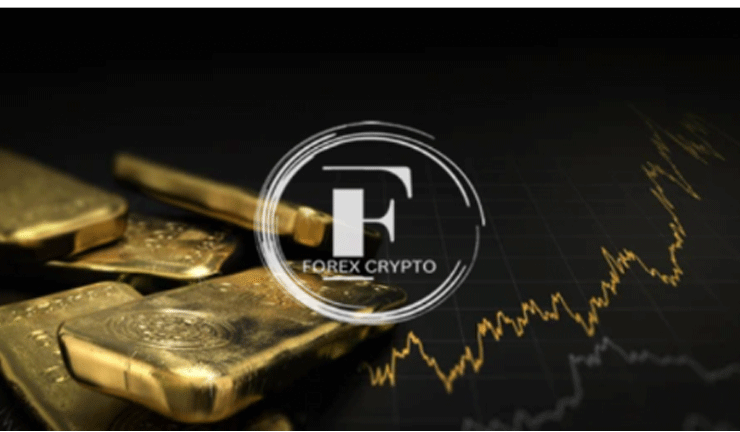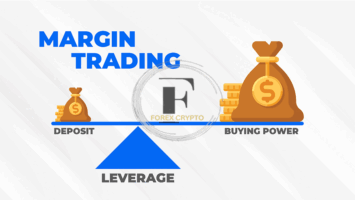Gold Trading has held a revered status for millennia as a precious metal with inherent value, cultural significance, and a hedge against economic uncertainty, In modern times, gold trading has become a popular avenue for investors and traders seeking diversification and potential profits in financial markets, Investors engage in gold trading for various compelling reasons, One primary motive is its function as a safeguard against inflation, offering protection for wealth during periods of rising prices, Moreover, gold serves as a safe-haven asset, particularly valuable in times of political or economic turmoil, providing stability to portfolios, Additionally, investors opt for gold trading to diversify their investment holdings, though it is important to note that while this strategy is widely recognized, it does not come with an absolute guarantee of success, This article delves into the basics of gold trading, exploring the factors that influence gold prices, various ways to trade or invest in gold, common trading strategies, and the pros and cons of trading gold CFDs (Contracts for Difference).
What Moves Gold Prices:
The price of gold is influenced by a multitude of factors, both economic and geopolitical, Understanding these drivers is essential for successful gold trading, Some key factors include:
- Safe-Haven Demand:
Gold is often considered a safe-haven asset, attracting investors during times of economic and geopolitical uncertainty, When traditional markets experience turbulence, investors seek refuge in gold, driving its price higher, For instance, during the global financial crisis of 2008, when stock markets plummeted and economic uncertainty loomed large, the demand for gold surged dramatically, Investors sought the stability and security that gold offered, causing its price to soar to record levels, This exemplifies the safe-haven appeal of gold during times of heightened market volatility and uncertainty.
- Interest Rates and Inflation:
Gold’s price tends to move inversely to interest rates, When interest rates are low, the opportunity cost of holding gold diminishes, making it more attractive to investors, Additionally, gold is viewed as a hedge against inflation, so rising inflation expectations can bolster its price.
- USD Strength:
As gold is priced in U.S., dollars, changes in the dollar’s value can impact gold prices, Even though the U.S. dollar is no longer pegged to the gold standard, there exists a general tendency for gold prices to move opposite to the direction of the dollar, A stronger dollar typically exerts downward pressure on gold, making it more expensive for holders of other currencies.
- Central Bank Policies:
Central bank policies play a significant role in influencing gold prices due to their ability to impact the supply and demand dynamics of the precious metal, Central banks, as major players in the global financial system, hold significant reserves of gold, Their decisions regarding buying or selling gold can have far-reaching implications on the market When central banks engage in large-scale gold purchases, it typically indicates a preference for diversifying their foreign exchange reserves or expressing a lack of confidence in other assets, such buying activity creates increased demand for gold, causing its price to rise, Additionally, these purchases signal to other market participants that central banks view gold as a valuable asset, further bolstering confidence and driving up prices.
- Supply and Demand:
The basic principles of supply and demand also apply to gold trading, Mining production levels, industrial demand, and jewelry consumption can influence the metal’s price, Gold has numerous industrial applications, including electronics, medical devices, and aerospace technology, Fluctuations in the demand for these industrial applications can influence the overall demand for gold, For instance, if there is a surge in demand for electronic devices, it may lead to an increased need for gold as a component, driving up the metal’s price due to heightened demand, Moreover, Jewelry consumption is another essential component of gold demand, Gold is a popular material for crafting jewelry and is considered a symbol of wealth and status in many cultures, During festive seasons, weddings, and special occasions, there is often a surge in demand for gold jewelry, potentially driving up prices due to increased consumer interest.
Trading and investing in gold may be done in a few different ways:
- Physical Gold:
Among the most time-honored methods of investing in gold lies the acquisition of physical gold in the form of coins, bars, or jewelry, This classic approach grants investors direct ownership of the precious metal, instilling a tangible sense of security, However, it is crucial to be mindful of the additional considerations tied to physical gold ownership, notably those related to proper storage and security measures, Ensuring the safety and preservation of the physical gold assets becomes a prime responsibility for investors who opt for this traditional investment route.
- Gold Exchange-Traded Funds (ETFs):
Modern financial markets offer a more streamlined alternative to physical gold ownership through Gold Exchange-Traded Funds (ETFs), These investment vehicles allow investors to purchase shares representing ownership of physical gold held by a custodian, typically a financial institution or specialized fund, By investing in Gold ETFs, individuals can gain exposure to the fluctuating gold prices without the necessity of dealing with the physical metal itself, This convenience makes Gold ETFs an appealing option for those seeking flexibility and liquidity in their gold investments.
- Gold Futures Contracts:
For more seasoned investors and traders willing to take on higher risks in pursuit of potential rewards, gold futures contracts present an alluring avenue, Trading gold futures involves entering into agreements to buy or sell gold at a predetermined price and date in the future, As a leveraged investment instrument, gold futures can amplify both gains and losses, making it essential for traders to exercise caution and possess a sound understanding of the market’s intricacies, The allure of gold futures lies in the potential to capitalize on future price movements without needing to physically possess the gold.
- Gold Mining Stocks:
Investors seeking indirect exposure to the gold market often turn their attention to gold mining stocks, By investing in shares of gold mining companies, individuals can align their financial interests with the performance of these companies in the gold industry, It’s important to note that the value of gold mining stocks can be influenced not only by the price of gold but also by factors such as the efficiency of the company’s operations, exploration success, geopolitical factors, and managerial decisions, As a result, investing in gold mining stocks requires a comprehensive analysis of various factors beyond the price of gold itself.
What is a Gold Trading Strategy?
Successful gold trading requires a well-thought-out strategy tailored to an individual’s risk tolerance and investment goals, Some common strategies include:
- Trend Following: Traders identify and follow trends in gold prices, entering long positions during uptrends and short positions during downtrends.
- Range Trading: This strategy involves identifying key support and resistance levels for gold prices and executing trades when the price oscillates within the established range.
- Breakout Trading: Traders watch for significant price movements that break through key resistance or support levels, indicating potential strong momentum.
- Fundamental Analysis: Analyzing economic indicators, central bank policies, geopolitical events, and supply-demand dynamics to make informed trading decisions.
Pros and Cons of Trading Gold CFDs:
Gold CFDs offer traders the opportunity to speculate on gold price movements without owning physical gold, Here are some pros and cons:
Pros:
- Leverage: Increased potential for profit is realized via the use of leverage, which is made possible by contracts for difference (CFDs), which let traders handle bigger positions with a portion of the overall transaction value.
- Short Selling: Traders can profit from falling gold prices by short-selling CFDs, which is not possible with physical gold.
- Liquidity: Gold CFDs generally offer high liquidity, facilitating easy entry and exit from positions.
Cons:
- Risk of Losses: Leverage can also magnify losses, exposing traders to significant risks.
- Counterparty Risk: CFD trading involves dealing with a broker, and if the broker defaults, there may be losses.
- Overnight Financing Costs: Holding CFD positions overnight incurs financing costs that can eat into profits.
Conclusion
Gold trading has a rich history and continues to allure investors and traders seeking diversification and potential profits, Understanding the factors influencing gold prices and adopting sound trading strategies are crucial for success in this market, While gold CFDs offer an accessible and leveraged way to trade gold, they come with their own set of risks that traders must carefully consider, As with any investment, knowledge, prudence, and risk management are essential for navigating the dynamic world of gold trading.




Comments (No)